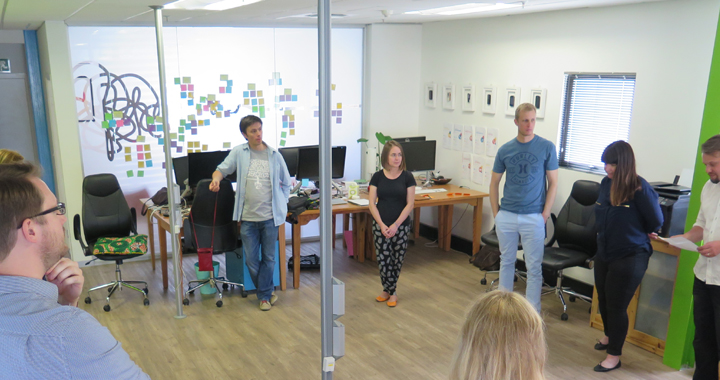I find myself trying to explain what I do quite a lot at braais and even though there has been a lot of talk about this UX stuff, there many acronyms that cause confusion. So for the non-UXer, I thought I would explain some of them to the best of my ability. I realise that I am over simplifying them, but we need to start somewhere.
UX: (User Experience)
This is a research filed. It was born with the need to make screen based interfaces easier to use, but has been explaining into the non-digital space as well. It involves research into an existing or new business and their target market. It aims to understand the target market on a personal level, identifying the customer’s personalities and relationships to technology. It then deduces what the customers need and works with the business to figure out the best way to offer what the customers need, in the most desirable manner. It is not about just re-skinning an existing product, but rather questions if the product is even necessary. For this reason UX cannot be done at the end of a product build, it has to be part of the process from the begining. For us to achieve the best results we use a methodology called user centred design (see UCD).
IxD: (Interaction Design)
UX has alway been associated to computers and interaction design is about more than that. It’s about designing any interactions, from using a bus transport system to opening a door. So you can say that UX is apart of the broader IxD family. These boundaries have become a bit blurry as UX is creeping into the larger company service and not just the screens. This is sometimes called customer experience design or service design.
SD: (Service design)
This is very similar to UX and IxD but to looks at the whole service offering of a company, not only the customer facing systems but the supporting systems as well. For example, if you make the kitchen great, the customers of a restaurant will have a better experience.
UCD: (User Centered Design)
This is a step by step process used to achieve great user experience. It involves steps as well as a pile of awesome tools. The steps are: 1.Research, 2.Concept, 3.Design and build, and 4. Launch and measure. In these steps we use different tools to get the outcome we need. There are many tools so I won’t list them all here but for example in the research phase we could use contextual interviews, diary studies and competitor testing. If you have heard of personas and usability testing, they are also apart of our toolbox in the UCD process.
UI: (User Interface)
UI design is a craft based filed and is the design and layout of the product’s interface. The product is conceived in the UX process and is made into visible pages in the UI design process.
Bonus non-acronyms:
Developer (or engineer)
This is the guy that makes the magic actually work. He or she writes the product that has been designed into code so that it does not brake and works the way it was designed.
Graphic Designer
Otherwise known as visual designer. Many people just say designer, but this often leads to confusion as there are many designers in a product’s life cycle. A visual designer makes the pages nice to look at. They need to use the designs created in the UI process but also make sure they understand the research in the UX process as the visual design can often play with the emotional state of the customer.
Finding a UX designer
A UX-UI-Developer that also does visual design is a unicorn. If you find one you are witness to a miracle! To create a desirable user experience you will need a team. It could be a small team, but it will still needs to be a team to cover all of the necessary skills.




About The Author: Chris Metcalfe
I'm not sure if I know want I want to be when I grow up. I have so far tried the entrepreneurial thing, industrial design, sound engineering and professional magic. I have been a UX designer for a decade now, so it looks like this might be it?
More posts by Chris Metcalfe